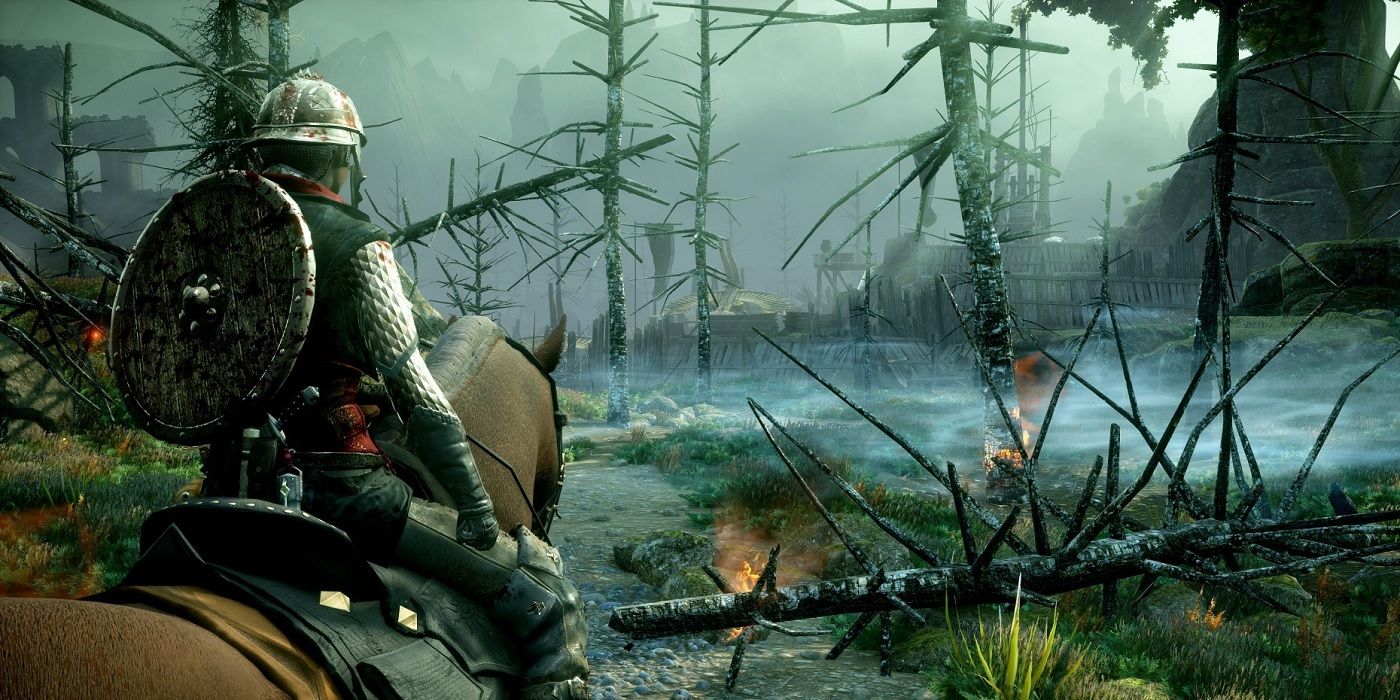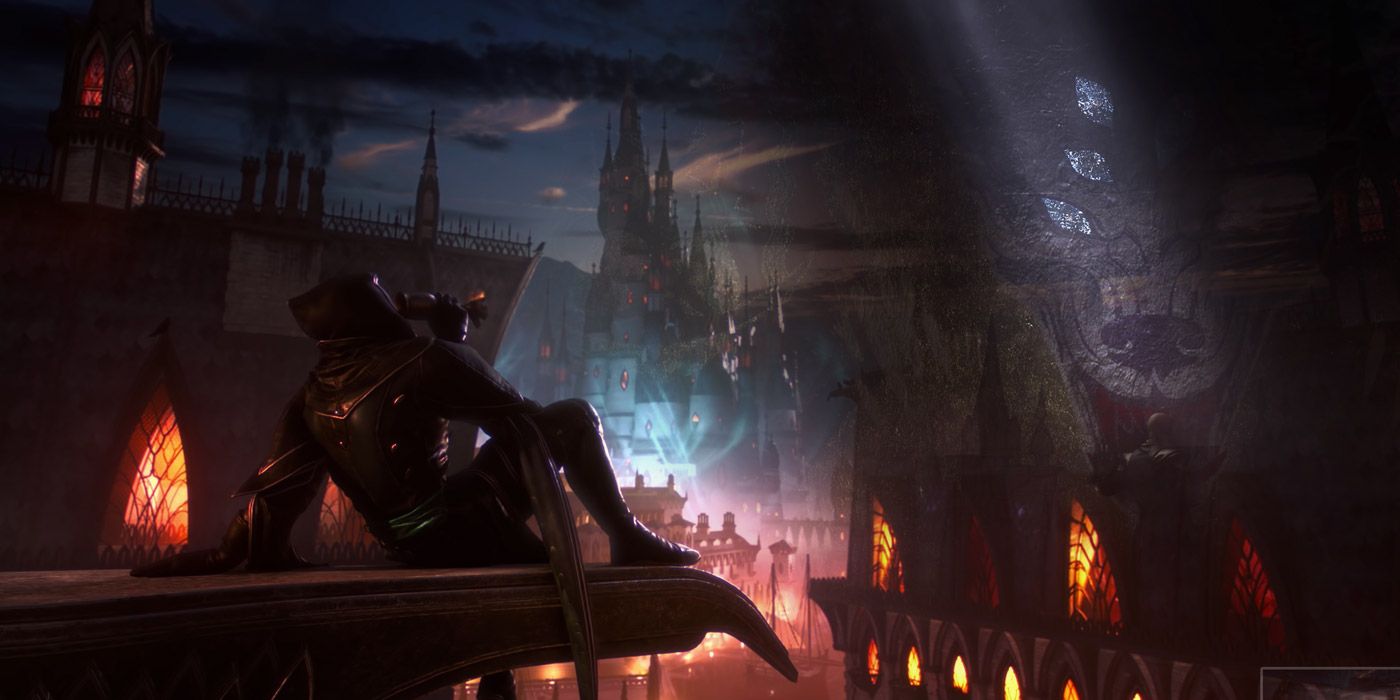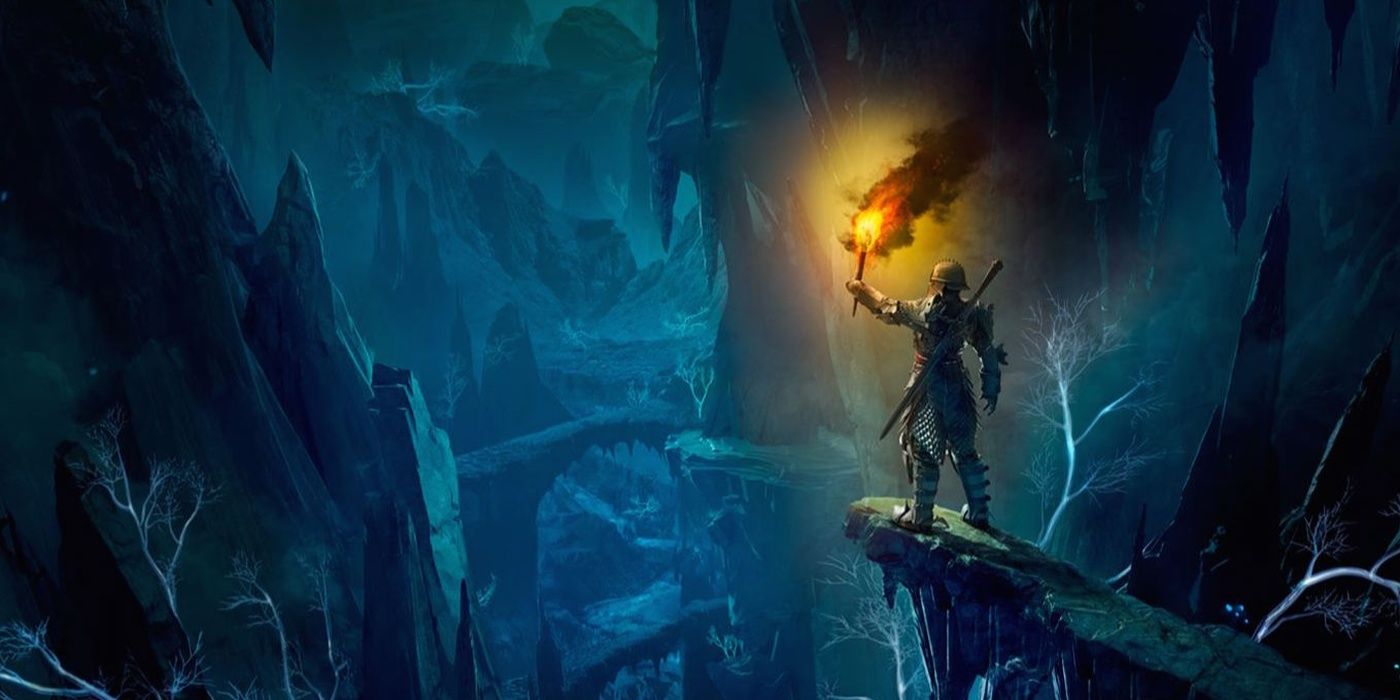BioWare gave fans a long-awaited update on Dragon Age 4 this month, releasing a new teaser trailer for the upcoming game at The Game Awards that doubled down on some of the goals the studio professed at Gamescom earlier this year. At Gamescom the developers claimed the next Dragon Age game will explore “what it’s like when you don’t have power,” with the game’s Game Awards teaser claiming that next player character will come with “no magic hand” like the Inquisitor from the last game.
However, if BioWare wants Dragon Age 4 to stick the landing on the next-gen consoles, the player character shouldn’t be the only change made from Inquisition. The third Dragon Age saw the franchise’s first attempt at a large game world. There are a few reasons an open world may not only be unnecessary for Dragon Age 4’s success, but could hinder it.
The Size of Dragon Age
Dragon Age: Origins and Dragon Age 2 did not have particularly large worlds. Neither games were open-world, and both games had a system where players would travel to certain areas using their map and were then free to explore these smaller levels, similar to the Mass Effect series. When Skyrim came along in 2011 and sold 20 million copies over the following three years, many RPG developers began looking for ways to integrate larger open-world gameplay into their upcoming titles.
Dragon Age: Inquisition went with a far larger world that the previous two games in the series, though the series’ creative director Mike Laidlaw called the term open-word itself “really loaded.” Technically Inquisition went with a semi open-world structure. There were 13 zones in total that the player could access in the game including Skyhold, the Inquisition’s HQ. Nonetheless, these loading screen-free areas were larger than anything the series had attempted so far in terms of map size, and the formula would be seen again in other successful games with large worlds like The Witcher 3.
The in-game world of Dragon Age: Inquisition had flaws. Many fans felt Inquisition areas like the Hinterlands were too large and too empty. The world of Dragon Age had gotten bigger, but BioWare had sacrificed some if its depth. While Skyrim’s main quest had never been its franchise’s focus, BioWare’s more linear and character-driven storytelling made it dull to explore areas that weren't featured in the main story.
While it may seem counterintuitive, there are some good reasons for BioWare to shrink the scale of Dragon Age 4. Inquisition’s map showed that while a larger world can be an interesting feature it doesn’t particularly complement BioWare’s style of storytelling. The addition of Inquisition’s larger areas did not hugely damage the experience, but time spent creating a large world could be better spent on several things that could help elevate Dragon Age 4 into the next generation.
Increasing Dragon Age's Depth
Instead of focusing on creating a large world, Dragon Age 4 could develop an even more in-depth consequence system. Decisions made early on in the game could unlock completely different experiences later on and dialog options could meaningfully and consistently influence the path of the narrative. It’s something many RPG developers have promised and very few have delivered on. One of the biggest criticisms of Mass Effect 3’s controversial ending was that it failed to take into account the cumulative decisions the player had made so far in the series.
The biggest challenge in creating these kinds of branching systems is time. By increasing the amount of paths the player can go down, the developers would also have to create, animate, and record dialog for far more scenes and possible interactions, many of which players wouldn’t see until they replayed the game. However, the game itself would also have far more replay value.
By cutting down on the huge development time of a large world, BioWare could spend more time developing a greater variety of cascading consequences. Dragon Age: Origins had a few great understated moments of consequence. If the player didn’t tell Alistair to buck up and deal with it after his long-lost sister rejected him, Alistair could not “harden” enough to become the great king he could have been.
There were other big decisions in Dragon Age: Origins from the new King of Orzammar to the possible creation of an Old God Baby. However, many of the consequences of these actions were not actually shown until the epilogue, where the player would see a short slide explaining the outcomes of some of their major decisions. Dragon Age 4 should aim to make more of these big decisions play out in-game.
Dragon Age 4 could also aim to diversify the kinds of stories it tells with each companion character. Most of the romances in the games follow the same rough structure, for example. If the player keeps talking to a companion and being nice to them, eventually they will get the dialog option to romance them. As long as the player isn’t rude or cruel, most of these romances can be sustained.
What if some romanced companions were more protective than others, and would insist on being brought along to certain dangerous missions? What if some romances could implode so badly that the companion could run off and find themselves in danger? Dragon Age has always had great secondary characters, but the players’ relationships with them could be far more integrated into the story like the relationships and romances in The Witcher 3, rather than mostly taking place in one-on-one dialog options at the game’s camp or equivalent. Some decisions could even lead to the early deaths of certain companions, as long as the consequences of those deaths meaningfully impacted the story.
Fans will have their own opinions, and there are many other aspects the developers could focus on. The point is that there are plenty of opportunities for BioWare to increase the scale of Dragon Age 4, but the focus should be on expanding the depth, not the breadth of its world. BioWare’s greatest strength has always been character-driven RPG storytelling. Given the time and attention it needs, the next Dragon Age could see the studio return to the top of the pile.
Dragon Age 4 is in development.



